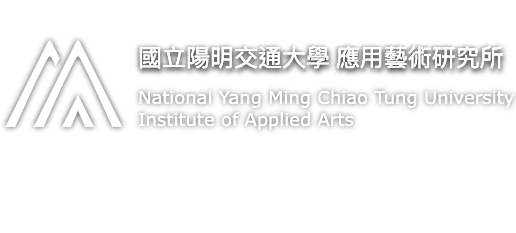LABORTORY
Design Laboratory
Prof. Ming-Chen Chuang, Chun-Cheng Hsu, Jian-You Li
The Design Lab is set up within the Industrial Design group in order to open out the IAA leadership function and its capacity to play a significant role in design education in Taiwan. Staff and students work together to explore the vision of design in the near future. Learning from Droog Design, which continually holds exhibitions at the Milano Furniture Fair, MIT Media Lab, which cooperates with enterprises, and the RCA, which is a leading school in Europe, the Design Lab’s objective is to promote Taiwan’s design reputation in the world. This starts with a studio work exhibition on the website, textbook publication, and then goes on to experimental design dealing with special issues such as vernacular material and interaction design.
The Film and Visual Communication Laboratory
Prof. Lai Wen-Shu
With a wide collection of art films from many countries, the faculty and students of this lab are interested in studying influential film directors from around the world. The research on visual symbols and metaphors in films is a major emphasis here. We further seek the possibilities of integrating short film, title design and animation with design applications. The activities of the lab include film introduction, viewing, making of video art and related film research.
Sensory Lab
Prof. Lin Hsin-I
Sensory Lab uses Sensory Ethnography, Media Anthropology and Speculative Design as a practical method, to find, create, redesign the invisible narratives about the field of everyday objects, and interact with dialogues such as film, sound landscape, and new media objects to conduct reflexive thinking across borders.
Courses: New Media Art Study, Sensory Medium, Interdisciplinary Art Practice, Experimental Film, Tactile Text Study, Transcultural Cinema, Sound Weaving Object, Sound Embroideries, Research and Creative Practice, Research Method.
Basic Visual Laboratory
Prof. Chen I-Ping
This lab provides facilities and resources for people that are interested in empirical studies of art or design-related issues and is equipped with hardware and software tools for doing psychophysical experiments. Research topics are centered on the perception of color, composition and linear perspective, cross-modality integration, attention allocation in art appraisal, etc. In recent years, a new line of studies on the cognitive components underlying art creation has also been added to this expanding range.
Experience Design Laboratory
Prof. Chun-Cheng Hsu
Design is inseparable from the user experience (UX). Successful user experience is a key to the ability to be used for physical or virtual services, such as Apple’s software and hardware services, Google or Facebook’s social media, and even artistically-oriented Japanese Teamlab entertainment experience, are all emphasize experience-centered design.
“Experience Design Lab” explores the interaction between people, people and products, people and the environment, and people and society. In addition to traditional media, it also analyzes the impact of new technology media on humans, such as Virtual Reality (VR), Augmented Reality (AR), robotics, social media, Internet of Things (IoT), etc., exploring how design influences the human experience and initiative. With “RTD, research through design”, we propose various design schemes in the form of lab, field, speculative design or design fiction.
Members: Chun-Cheng Hsu https://cchlab.nctu.edu.tw/
Digital Fabrication Laboratory
Prof. Jian-You Li
In view of the wide application of Digital Fabrication technology in various fields of design, art and media creation, we have established this “Digital Fabrication Laboratory” to support the prototyping needs of various design creations of teachers and students in the future. The lab combines the resources of ICT and uses a variety of digital fabrication tools such as 3D printers, photo-curing printers, powder sintering printers, laser cutting machines, five-axis milling machines, large woodworking milling machines and desktop robots, to support a wide range of products, jewelry, vehicles, structures, furniture, wearables and interactive devices.


